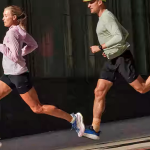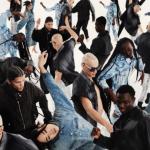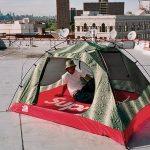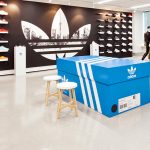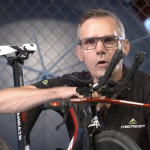If 2016 proves to be the pivotal year for big change in the active lifestyle industry, 2017 will represent the big shake out.
By David Clucas and Thomas J. Ryan
That’s the sentiment from more than 20 active lifestyle executives SGB spoke to for its annual economic industry outlook. While a few more retail bankruptcies are a possibility in the new year, the survivors are on board with a new paradigm, largely focused on an omni-channel approach that looks to deliver products, information, experiences and services to consumers no matter when and where they shop.
Much of that business will be online — ask a room full of people where they last spent $100 or more on a product, and you’ll get the same answer — but just as crucial will be a redefining of brick-and-mortar retail. Local stores — both third party and direct-to consumer — will need to serve both as convenient product-delivery centers and, more importantly, a local hub for real-life brand experiences and events that can’t be matched online. Local marketing and merchandising budgets and partnerships will need to swell.
As for the sports and activities themselves, the industry is bullish, and rightly so. Health, wellness, fitness and the outdoors remain extremely popular and fashionable. What’s changed is that there are hundreds, if not thousands, of new ways to recreate beyond the traditional core activities, and each slice of the pie is getting thinner. The answer for some brands and retailers will be to diversify — acknowledging the CrossFit, Yoga and Mud Run crowds — while others will be just as successful hyper-concentrating on their niche.
Perhaps the biggest question for 2017 is, where will all the extra inventory from the bankruptcies and warm winters go? (At least it’s snowing now.) Retail sales figures, at least from those still standing, suggest that demand remains high for active lifestyle products, particularly with an improving economy. But can the industry react quickly enough to shift product to the right channels? Throw in a new U.S. President and significant shifts in trade policy, plus rising interest rates, and 2017 will keep us watching.
Here’s the perspective from top industry executives, surveyed in December 2016:
Our outlook for the team industry is that those companies positioned for growth, with a strong technology, nimble supply chain and the ability to scale, will continue to expand market share in 2017 and beyond. Concerns: The political environment and general volatility around it can always make for nervousness in both financial and business markets. Rising interest rates, which can impact consumer spending habits, should be a concern. Potential trade wars with China and other countries that may impact pricing or availability of goods and services should be a concern for all parties dependent on merchandise not manufactured exclusively in the United States. — Adam Blumenfeld, CEO, BSN Sports
One great thing about our industry is that consumers are passionate about the sports and fitness activities that are important in their lives. As a result, there are plenty of consumers who treat their sport product purchases as more of a must-have versus a discretionary purchase. I believe this flattens out trend curves in our industry. However, the messiness created by retailer bankruptcies will continue to play a major role in 2017, as inventory needs to be flushed through from last year. And I expect more retail closures in 2017. To successfully grow a business in this or any economic climate, a company simply needs to make best-in-class products that consumers desire and then partner with healthy, profitable retailers to grow and expand together. — Brian Anderson, President, 2XU North America
As we look forward to 2017, we are relatively optimistic that the outdoor market will regain traction after a volatile 2016 Q3 and beginning of Q4. We continue to see opportunity and growth in our footwear and apparel categories in the coming year, but are closely watching the winter-specific business over the next 45 days as the weather and general consumer sentiment continue to evolve. While we are forecasting growth in our core ski business, the majority of our growth is based on new product initiatives. Lastly, we will continue to manage our inventories tightly, particularly as the market gets through the excesses created due to the bankruptcies in 2016. — Brian Mecham, GM, Salewa North America
Most brands in the active lifestyle space determined their 2017 product direction in early 2016. Given the backdrop of excess inventory in the channel, less-than-robust retail sell-through since 2015 and high-profile bankruptcies, a very cautious approach to 2017 can be expected. We believe that the excess inventory situation will continue to impact the market in 2017 by putting downward pressure on prices and restricting cash available for purchasing additional inventory. It is likely that most brands will be conservative with their 2017 inventory commitments. While this should be a positive offset to the current excess inventory situation, it also has the potential to limit the upside retailers have in chasing business driven by seasonally “cooperative” weather patterns and/or positive changes in consumer spending. — Brian Thompson, GM, ExOfficio
While cautious, we are optimistic that 2017 will be an improvement over 2016 for sporting goods brands and retailers. Specifically, we believe a combination of last year’s unusually mild early winter, retail bankruptcies, weak retail foot traffic, the presidential election and a strengthening U.S. dollar all weighed heavily on 2016 financial performance for many companies. Additionally, the “Amazon effect” has continued to hurt undifferentiated retailers, and we expect the pain to accelerate for those particular participants. Heading into 2017, we do see the potential for overall conditions to improve. Simply put, even though current conditions are not ideal, the lapping of easier comparisons as well as tighter inventory management should help to improve industry growth metrics. The caveats to our optimistic 2017 forecast are around those brands that will have to continue to deal with a strengthening U.S. dollar and the U.S. trade policy dynamics under President-Elect Trump. The uncertainty around U.S. trade policy is already hampering certain M&A transactions in process right now, especially those that are heavily exposed to foreign manufacturing. As for the M&A market, activity was down substantially in 2016 compared to 2015, albeit against a strong comparison. That said, strategic and private equity cash reserves remain at record highs and M&A appetite for brands continues to be quite strong. Interest rates will most likely increase, but by historical standards, borrowing will remain inexpensive and debt will continue to be plentiful. These factors, combined with the likelihood of improved industry growth, should lead to M&A activity equal to or possibly greater than in 2016. — Brian Rowe and Michael Smith, Managing Directors, Investment Banking, D.A. Davidson & Co.
What runners are buying, where they are buying and how they are participating in the sport of running are all changing. But despite all this change, the brands and the retailers that will flourish are the ones that focus on the runner and delivering products and experiences in a convenient, unique and authentic way. The core of every sport starts with running and although recent figures show the number of runners in the U.S. declining over the past two years, there are still 48 million runners that run weekly. We know that there are millions more people that don’t consider themselves runners but are actually running a fair amount. Whether in group classes or cross training, running remains an important part of their lives. Therefore, at Brooks, we believe speaking to these people through our performance products is key to growth moving forward. Although the performance run market has been slow over the past few years, we believe that performance products remain timeless to active people. — Dan Sheridan, Executive VP & GM, North America, Brooks Sports
Expect even more aggressive competition between various channels, including retailers prioritizing house brands and brands prioritizing direct-to-consumer. The landscape is changing and key relationships may be challenged. Brands will have sales concentrated with fewer retail channel options. This may be good for large established brands, but could be more challenging for newer/emerging brands. Innovation in both the manufacturing process and the further integration of technology and activity will drive a new product pipeline and opportunity. Short-term, the market will be relatively stagnant in the U.S. depending on the segment, with significant growth opportunity in international markets for those with understanding of penetrating local markets. — David Kinzel, VP, One Source Risk Management & Funding
We are cautiously optimistic that 2017 will be a rebound year for the golf industry. This year we’ve seen some unprecedented consolidation on the retail side in a tough overall sales environment. As we turn the calendar to 2017, we believe our industry will be able to bounce back with positive momentum. There are some very exciting new products coming in early 2017, and the young guys on The PGA Tour continue to inspire and engage with golfers of all ages. — Dick Sullivan, President & CEO, PGA Tour Superstore
Long-term running participation rates remain a concern. Not only have we seen race finishers steadily decline since 2013, but organized youth sport participation is waning as well. The long-term health of our industry is directly linked to the long-term fitness of future generations, and right now it appears this trend is moving in the wrong direction. Future trade wars and currency volatility are also concerns. There is a certain level of uncertainty with any presidential transition, and this year is no exception. However, the tone and rhetoric of the president-elect toward trade has us watching this new administration’s moves very carefully. We are hopeful cooler heads prevail, but we will be building some safeguards into our financial models. More optimistically, consumers are open to more brands than ever before. A decade ago, consumers chased brands; now brands pursue consumers. The power of the internet has flattened the world and made the niche mass. We’ve moved into an era of inclusion and collaboration where consumers use brands to tell their own story. While this means the competition is fiercer than ever, we are excited by the opportunity to introduce new consumers to our authentic brand. We are also excited by the intersection of performance and lifestyle. Asics is and will always be a sport performance brand, but we love finding new ways to inject our technical expertise into new and innovative products. — Gene McCarthy, President and CEO, Asics Americas
Unfortunately, 2016 was not a great year for some active lifestyle retail chains. From my perspective, I think the bulk of the business will move to the remaining brick-and-mortar stores and their own online channels. The movement to shopping online through both third party e-commerce retailers and direct-to-consumer channels will continue to grow as an overall percentage of sales, but the loss of retail brick-and-mortar locations will not be the driving force fueling the e-commerce sales growth. — Greg Thomsen, Managing Director, Adidas Outdoor USA
The running industry is certainly going through a significant shift, and it’s a critical time for us to think bigger, smarter and more innovative. Our stores have felt the results of excess reduced-priced product flooding the marketplace this year, and I’d expect that to continue into 2017. At the same time, Amazon is changing the game for everyone and we can’t ignore its impact or the way it has changed how customers explore and buy products. It is forcing our vendor partners to make some really hard distribution decisions relative to managing brand integrity versus volume. Data shows that running is cooling off a bit, but we remain very optimistic that running will always be a core fitness activity. We’ve watched the growth of CrossFit, boot camps, mud runs, Spartan runs and non-traditional races that provide a new type of experience versus the standard 5K. We’re putting a lot of resources and focus on understanding how we can best incorporate new and emerging technology into our in-store experience. We’re also investing in a strategy that broadens our training programs and incorporates new ways to participate. We’re working with our vendor partners to deliver unique products and opportunities for our brand that customers can’t get elsewhere. We’re also continuing to evolve the way in which we communicate and connect with customers through digital platforms and the online store experience. — Jeff Phillips, President & CEO, Fleet Feet Sports
It’s been a challenging year fueled by the pace of consolidation in several channels. However, at United Sports Brands we’re looking forward to 2017 and to many exciting growth initiatives, all focused on innovation. These initiatives include Shock Doctor’s multiyear partnership with the NBA to promote mouthguard adoption among basketball players of all levels. Nearly a third of all injuries to high school basketball players are to the head and face. While mouthguards are a critical piece of facial protective equipment, they are not required in basketball. We believe this has tremendous growth implications in the coming years. We’re also launching an innovative merchandising system that will revolutionize the shopping experience at retail. In addition, we’re bringing more than 70 new products to market across our five brands in 2017. Premium new offerings from Nathan, the leader in running essentials, include a line of game-changing hydration vests and waist packs developed through collaboration with notable ultra-runners, Stephanie Howe and Rob Krar. Athlete care continues to be a growth opportunity and Bio-Logix from United Sports Brands is a philosophy of sports medicine applied to a body part and particular conditions, including the complex joints of the ankle and knee. Two remarkable innovations emerged from this approach, Shock Doctor’s Bio-Logix ankle brace, the first anatomically engineered low-profile ankle brace designed to outperform traditional lace up and hinged ankle braces; and Mcdavid’s Bio-Logix Knee Brace, the first knee brace that blends custom brace stability with a comfortable and flexible fit. — Tony Armand, CEO, United Sports Brands
RW Baird has a bullish outlook based on increased R&D spending, reduced U.S. political uncertainty, a more favorable regulatory environment, reduced tax complexities and continued expansion of global affluence. All of this combined should drive product and business model innovation and increased entrepreneurism. Also, collaborations between industry actors not only help deliver innovative new products, but direct-to-consumer and “last-mile” customer service models that expand customer accessibility, convenience and overall participation rates. Canyon.com and Velofix are two examples in the bicycle category, but similar dynamics are playing out in other industry verticals. Our biggest concerns would include market and/or foreign political black-swan events. — Joe Pellegrini, Managing Director, Robert W. Baird & Co.
While the tennis industry is facing some challenges at the moment, particularly when it comes to a flat or declining equipment market, there remains optimism about the opportunities in front of us. For instance, as we move into 2017, there is a collaborative push by the industry to promote the health, fitness and wellness benefits of this sport. Recently, Dr. Jack Groppel was named the new health & wellness advisor for the tennis industry, and he’s in the process of assembling an advisory task force to better connect tennis with mainstream thinking about health, wellness and wellbeing practices. From an industry perspective, we’ve stepped up our educational outreach of those in the tennis business with important conferences and webinars, along with expanding the Tennis Industry Association’s Tennis Owners & Manager Conference next March in Orlando, FL. There is also an emphasis on expanding Professional Tennis Management programs at colleges across the U.S., led by the new USTA University. Tennis participation, which has seen minor gains in recent years, is poised for more rapid growth as key programs and collaboration by the USTA and other groups help to reach into high schools, middle schools and elementary schools, along with new offerings for adult recreational tennis. — Jolyn de Boer, Executive Director, Tennis Industry Association
It’s snowing and it’s cold just in time for holiday shoppers to decide what they want to buy their loved ones who like to be outdoors in winter. Second, the economy is growing overall; unemployment is down, GDP is up, consumer sentiment is up and consumer spending is up … which is all good news for an industry that relies on disposable income. If weather and economic conditions remain good, we could have record sales in the snow sports market. There is a lot of pent-up demand in the East after last season’s feeble winter and the West is still stoked on snow. — Kelly Davis, Director of Research, SIA
Now that the presidential campaign is over, we are looking forward to industry opportunities that may be presented as a result of the political change. There are certainly questions that will remain unanswered until after the new year, some of which we asked last year – will manufacturing jobs return to the United States so that our economic engine generates future customers for our products? Will the tax climate change in a way that encourages Americans to invest in sports, health and lifestyle improvements our industry can deliver? What will our industry competitors face with respect to labor costs and health care costs, both of which have the potential for derailing successful companies? While there are certainly issues of concern going into 2017, we believe there could be a possible adoption of the PHIT bill in the upcoming year, but it will likely not happen in the lame duck session. A similar analysis applies to any legislation pertaining to the sales tax fairness issue. There may be some movement on the issue given President-elect Trump’s emphasis on small business. — Matt Carlson, President & CEO, National Sporting Goods Association
We expect that the firearms industry will continue its long-term growth trend in 2017, as it has for the past 20 or so years under both Republican and Democratic administrations. But we think it will do so in a more normalized market against a more stable political backdrop with fewer of the periodic spikes in demand that have occurred when law-abiding consumers perceive that politicians are seeking to enact restrictions on their ability to purchase the products they want to buy. — Michael Bazinet, Public Affairs Director, National Shooting Sports Foundation
The coming year could be challenging for the outdoor industry. However, challenges can represent opportunities for the right company. I expect that if there are additional bankruptcies in the retail sector this will put additional pressure on other outdoor brands. In addition, consumer brands will need to work harder to gain resonance with customers in the face of increasing competition in product choices. Increasing competition may lead to M&A activity in the industry, with both strategic and financial acquirers seeking assets that will help them reach new markets and broaden their customer reach, while leveraging successful business practices and talented operators. — Nathan Pund, Managing Director, Lazard Middle Market
The retail environment is a bit challenging with all the bankruptcies and ongoing consolidation. Retailers are also struggling as consumers change their buying habits and how they look for product. As far as the year ahead, one challenge is there will be a lot of closeout inventory in the marketplace. There’s going to be some really good running shoes at some aggressive prices. Eventually, that inventory is going to flush out. So I’m pretty optimistic about the second half of the year when all the inventory should be cleared and retailers are going to be prepared for the business that will come. Overall, I think it’s a fascinating time for the industry because the consumer has allowed us to bring some real innovations to the marketplace. The consumer is also looking away from some performance looks and definitely toward some lifestyle looks. Luckily, many performance models have morphed into more lifestyle designs. — Patrick O’Malley, President, Saucony
The outdoor industry is clearly in the midst of a massive generational change: ownership, leadership and consumer. Out of this transition, opportunities will arise for brands to connect to the evolving outdoor consumer. — Rick Meade, President, Nikwax
As a nearly $70 billion industry that impacts approximately two million American jobs and creates $55.6 billion in annual wage income, golf has experienced its challenges but is healthy and thriving. 2.2 million people tried golf for the first time in 2015, the most since 2.4 million in 2000. We are seeing large numbers of new audiences being introduced to the game through non-traditional venues such as Topgolf, but also through the success of our industry’s growth-of-the-game initiatives such as The First Tee; Drive, Chip, Putt; PGA Junior League Golf; LPGA-USGA Girls Golf; and Get Golf Ready. 2016 was historic for the industry with four first-time men’s major champions, golf’s return to the Olympics after a 112-year absence and Team USA reclaiming the Ryder Cup. We believe that we will continue this progress in 2017. — Steve Mona, CEO, World Golf Foundation
It has been a strong year for OrthoLite; we continue to hold 70 percent share of the open-cell market, our superior comfort technology was found in more than 400 million pairs of shoes in 2016 and we’ve helped more than 200 brands improve their products comfort, performance and overall value. We have recently added three new hires to our sales and marketing team to support OrthoLite’s dedication to strengthening partner relationships across the globe including Dan Legor as Director of Marketing, Andy Downes as Sales Manager, Key Accounts along with Matt Hennessey as Sales Manager, Performance East. In the coming year, OrthoLite will also be investing in building a new foaming and molding factory in Vietnam to further support our partnerships. This year, we conducted third party research revealing that consumers rank insoles as the number one factor driving both comfort and performance of the shoe and 65 percent of footwear brands indicate that the insole is critical for driving performance and comfort in the shoe. Comfort remains a priority for all of our brand partners and thus we’re optimistic about continued growth in 2017. We are invested not only in being their comfort solutions provider but also a partner in helping them to sell more shoes and create loyal repeat consumers who, in turn, will help grow their revenue.— Pamela Gelsomini, President, OrthoLite
Last season proved to us that where it snows, people participate. This bodes well for our industry. We’re also undergoing a changing of the guard in many important roles throughout the industry. From the new SIA President to the new CEO of PSIA, along with other influential positions among buying groups and suppliers, our industry is benefitting from new relationships being forged with a positive outlook and willingness to work together. It is fair to say, the world has changed a lot in forty years. We are finally catching up. The bankruptcies of 2016 will play into the current buying season. In some areas, specialty snow sports retailers will pick up some business and become healthier. However, that can only happen once the glut of inventory has passed. My real concern from the bankruptcies lies in the lack of exposure snow sports will have in those locations. Regardless of the product mix or the level of service these many storefronts provided, we have lost tangible opportunities to inspire young people to want to try skiing and snowboarding. — Teddy Schiavoni, Chairman Elect, National Ski and Snowboard Retailers Association
After a year of massive disruption marked by bankruptcies and consolidation, the industry will likely navigate slowly forward in 2017. As inventories become leaner, we envision moderate overall growth, but uncertainty around the future may limit consumer spending. Obviously, the direction of the new Trump administration and action on trade, regulations and employment will play a critical role in economic health and consumer confidence. In terms of critical trends, developments with intelligent manufacturing will continue to compress the time and distance between brands and the consumer. We believe we will see breakthrough technologies sooner rather than later. Sensor technology, especially with smart apparel, will shift the fitness tracking category. — Tom Cove, President & CEO, Sports And Fitness Industry Association
This story appears in the Winter 2017 SGB Magazine, publishing next week. Get your print copy at Outdoor Retailer Winter Market by visiting the SportsOneSource booth (#100).



